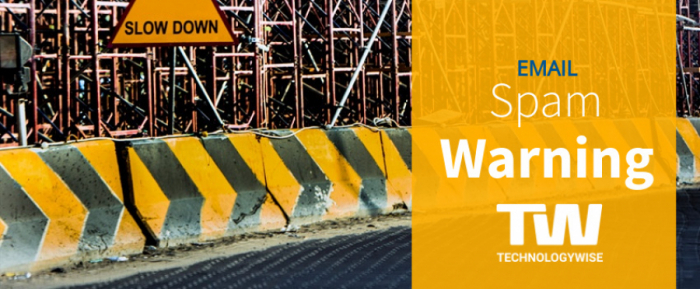These messages all follow the same pattern but there are particular ones that fake the sender's address and pretend to come from a person in charge of your company, asking the recipient to go to the supermarket to purchase iTunes cards or run an errand etc.
Please note that these are fake so please do not take any action other than to ignore and delete these emails or call the sender if you have their number and confirm the request.
Our tips on dealing with spam emails
As a reminder, here are our safety guidelines on dealing with emails - there are three main things to be careful of in emails - address, links and attachments:
Address Spoofing
Unfortunately, it's really easy for someone to pretend an email they send comes from another address. ("Address spoofing"). Pay particular attention to email addresses if the content of the email contains links or attachments.
For example:
- a common trick is to have an address that looks like a legitimate one like this:
This email address is being protected from spambots. You need JavaScript enabled to view it.
How to spot the spam:
- Notice how the name after the @ sign (the "domain name") does not look right (unless you are really intending to go to the ANZ Bank in ".de" = Germany...)
Another technique is to put a "real name" before the actual email address like this:
"Alvin Gounder" <This email address is being protected from spambots. You need JavaScript enabled to view it.>
- Do not focus on this name "Alvin Gounder". Instead, pay attention to the email address and especially the domain name (the name after the @ symbol). You should not expect to get a work email from Alvin from the TW team from "@beautifuldays.co.nz".
If you encounter any combination of these techniques, then you should be treating the email as suspicious and delete it.
Link Spoofing
For example
- A link like this one could make you think that you are going to a different place than you actually are. This link will take you to the TechnologyWise Contact page instead of Amazon.
How to spot the scam
- You can check where the link will take you by hovering your mouse over the link for a few seconds (there should be a popup showing where the link will go or it will show you on the bottom left corner of the browser window).
It is always a good idea to check this before clicking on any links in an email - even from known contacts. Again, if in doubt, do not click on the click and delete the email.
Attachments
Please be very careful of attachments that are not documents or PDF files. People don't usually (or shouldn't) send anything other than these types of files by email.
For example
Double-check the name of the file and the extension (the letters after the "."). A common trick is to name the file as a pdf for example, but adding another extension, e.g:
yourpayslip.pdf.zip or XeroInvoice1234.pdf.exe
How to spot the scam
Notice in the previous two examples, the file extensions are a .zip and a .exe. These are very dangerous types of attachments.
If you do receive attachments other than documents, it may be a good idea to take five minutes to confirm with it a trustworthy technical support person, on whether it is a good idea to view or open it.
If you need any more information, our team at TechnologyWise are on call and ready to support you and answer any questions you may have.
We’re here to support you!


